Mercedes-Benz – An Appreciation
"The best or nothing" for nearly a century
BY: PHILIP RICHTER
PHOTOS: MERCEDES-BENZ
Karl Benz is considered the inventor of the first practical patented automobile in 1886. Mercedes-Benz is the result of the 1926 merger between Daimler Motoren Gesellschaft and Benz & Cie. The union of Daimler and Benz later proved to be an enormous success in the pre-war era.
In the late 1920s and throughout the 1930s, Mercedes-Benz developed iconic models, including the supercharged 540K, which has emerged as one of the most collectible and valuable classic cars of all time. After 1933, Adolf Hitler was chauffeured around Germany in imposing 7.7-liter Mercedes-Benz “Grosser Mercedes” open parade cars. By the late 1930s, Mercedes-Benz dominated European racing and emerged as the ultimate luxury brand. The design, engineering, and performance of their vehicles from this era remain an unforgettable accomplishment.
Following the Allied bombing and the defeat of Adolf Hitler in 1945, Germany lay in ruins. Berlin was rubble and, after the war, became a battleground between communism and capitalism. Germany’s infrastructure was non-existent in 1945 as electricity grids, rail, factories, and roads were demolished. After the war, the Nuremberg trials revealed to the world the horrific atrocities of the Third Reich. The revelation of the Holocaust added additional weight on the already broken and burdened German people. Out of these ashes came an unlikely outcome—the term “Made in Germany” ultimately became globally recognized as a promise of quality, craftsmanship, precision, and excellence.
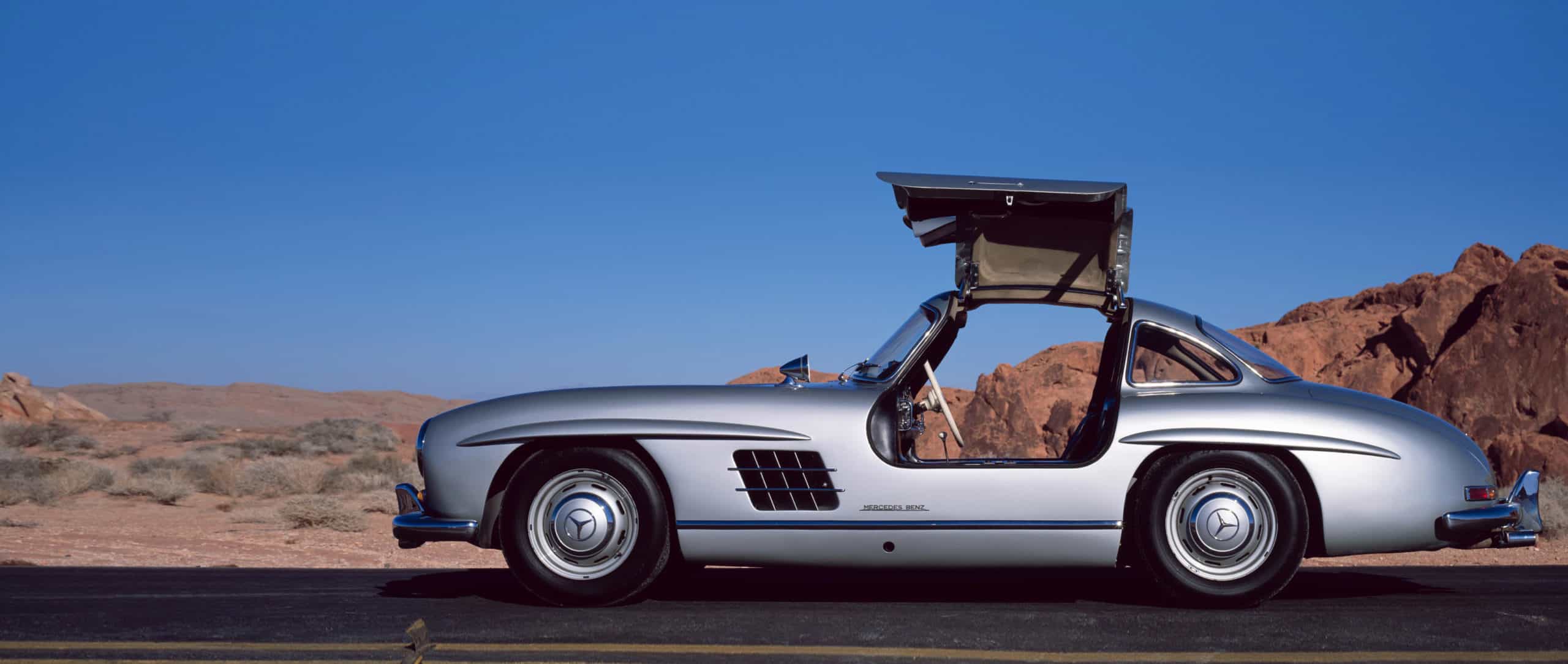
The three-pointed star of Mercedes-Benz became the ultimate symbol of Germany’s post-war industrial renaissance. Mercedes-Benz remains one of the outstanding business success stories to come out of post-war Germany. The 1955 300SL Gullwing is a triumph not only because of its advanced design but also because its manufacture occurred only ten short years after Germany was literally in ashes. The 300SL was Mercedes’ first iconic post-war car, with many more to follow. During the 1950s, Mercedes-Benz also launched the handsome and iconic W186 Adenauer. As the ’50s gave way to the ’60s and ’70s, Mercedes-Benz upped the ante. It developed several more memorable models, including the 300SL convertible, the Pagoda SL, the 600, the SE 3.5 coupe and convertible, and the 6.9 sedans.
In the post-war era, Mercedes products gained a well-deserved reputation for being built to the highest standard. Each passing decade further solidified Mercedes’ reputation for quality and durability. In the late 1970s and into the 1980s, their build quality intensified. Mercedes’s design from this era was under the careful leadership of Bruno Sacco. Sacco’s designs clarified what a Mercedes should look like, and his distinctive aesthetics eventually carried through across the entire model range. As a result, any Mercedes from the late 1980s is immediately recognizable as a Mercedes. During this period, models like the W126 S-class, W124 E-class, and W201 190-series exemplified Mercedes-Benz’s commitment to luxury, longevity, design, and engineering. “Engineered Like No Other Car in the World” was more than just their 1980s advertising tagline—it was a way of life at Mercedes-Benz. It was amidst this backdrop that two exceptional Mercedes-Benz models arrived—the 190E 2.3-16 and the 500E/E500.
For all the great cars in the annals of history at Mercedes-Benz, it is curious that two of their most important modern classics are four-door sedans. The 190E 2.3-16 and 500E/E500 exist as a by-product of the ’80s era of extravagance and excess. In the go-go 1980s, anything was possible—and if it wasn’t, one could throw more money at the problem. These two high-performance sedans are based on the successful and popular W201 and W124 chassis. Both these platforms were mass-produced and served as entry and mid-level luxury sedans. They were also the durable models of choice for diesel taxi cabs from Hamburg to Helsinki. In developing the 2.3-16 and the 500E/E500, Mercedes-Benz took a highly unusual step and looked outside their walls for help developing and producing these low-volume specialty cars. A matter of distinction in an era of mass production, both these models harken back to an old-world era of outside collaboration and handcrafted assembly.
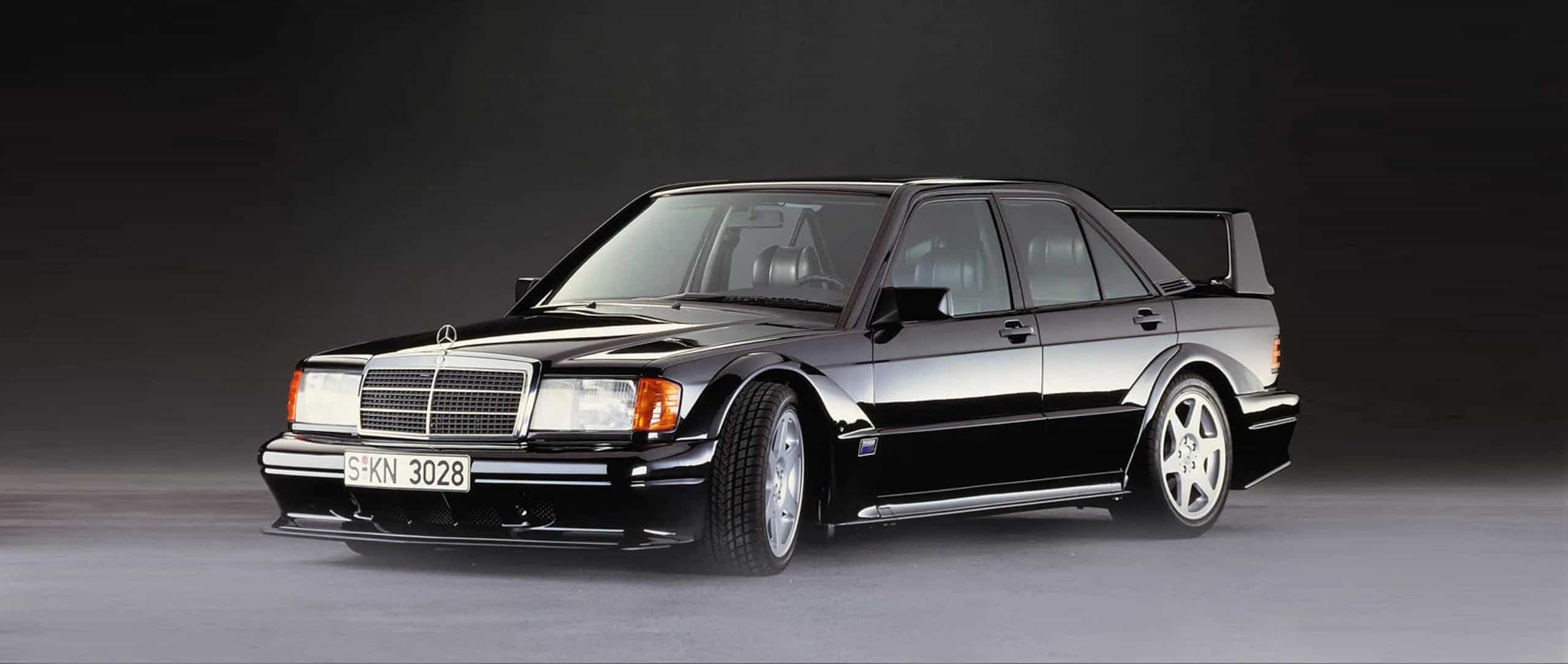
The 190E 2.3-16: A High-Revving Homologation Racecar
Initially developed as a rally car, the 190E 2.3-16 is based on the W201 “Baby Benz” platform. Mercedes engaged the renowned British race-car engine developer Cosworth to help take their existing 2.3-liter motor to another level. By the time the high-performance Mercedes rally car was ready for production, Audi had decisively clinched the high ground with its innovative Turbo Quattro. Mercedes abruptly pivoted and refocused the 190E 2.3-16 and adapted it towards the DTM German Touring Car Championship. This series required that eligible vehicles also be production road cars. Thus, by this circuitous route, the 190E 2.3-16 eventually found its way into dealer showrooms. Mercedes spent a small fortune developing the 2.3-16, and the help of Cosworth only added to its legendary durability and advanced engineering.
As a homologated race car, the U.S. variant of the Mercedes-Benz 190E 2.3-16 is a comparatively rare car. Fewer than 2,000 examples came into the United States between 1986 and 1987. Upon its introduction, the high-performance 190E 2.3-16 had a higher list price than an S-Class. The angular Bruno Sacco design of the W201 made for a perfect palette that benefitted from aggressive bodywork and a factory-installed rear wing. The high-revving 16-valve Cosworth engine combined with muscular bodywork enabled this Baby Benz to punch above its weight. The 2.3-16 is no powerhouse by today’s standards, but its high-revving motor and near-perfect power-to-weight ratio make it memorable and fun to drive. Unusual for a Mercedes of any era, it came with an optional dogleg five-speed gearbox. The firm Recaro sport seats are comfortable and supportive. Here in America, the 2.3-16V came in only two colors, Blue-Black metallic and Smoke Silver.
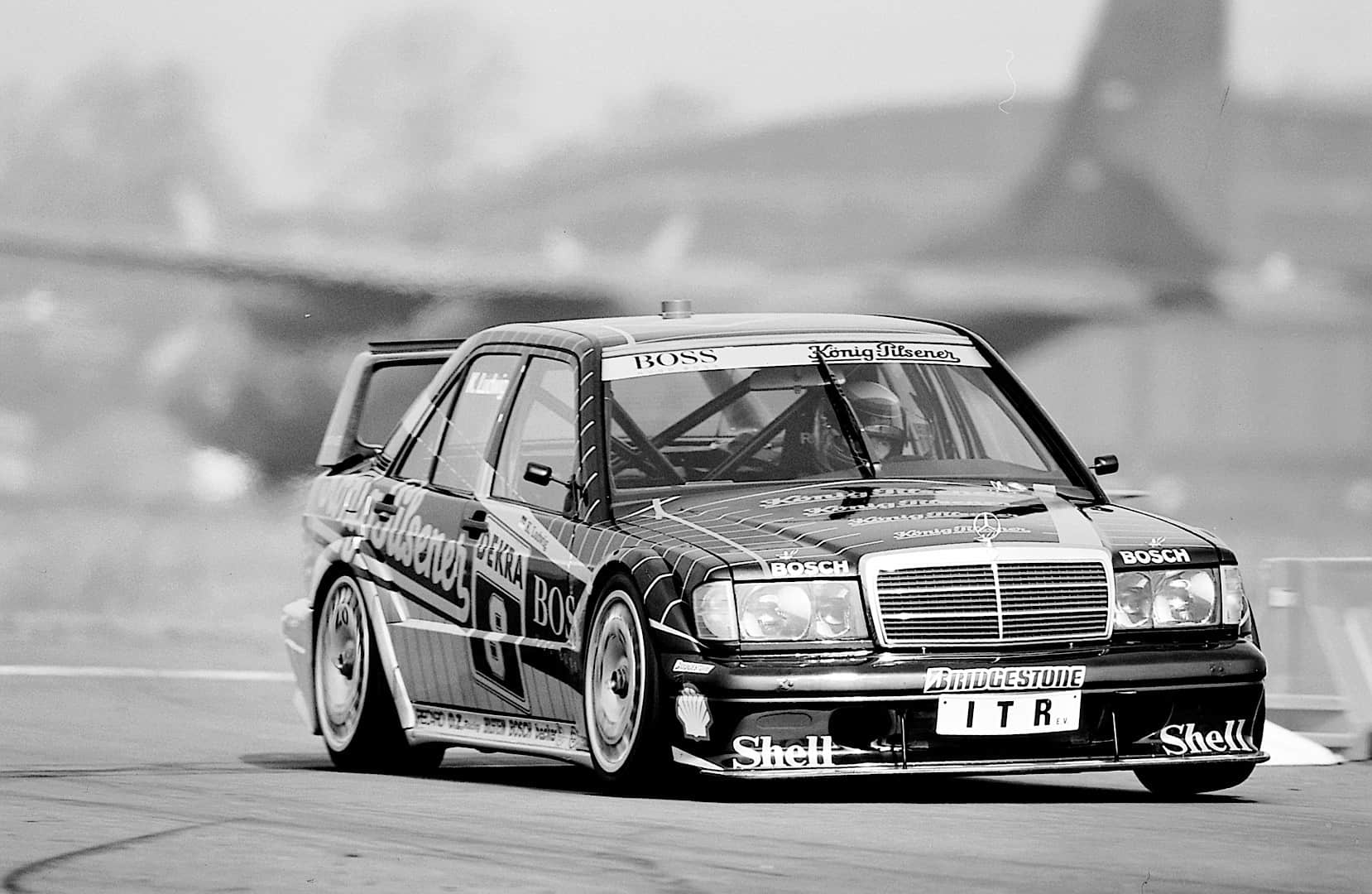
As a homologation car, the 190E 2.3-16 successfully competed in the DTM series against the BMW E30. A young Aryton Senna piloted an early production car to victory at the Nürburgring “Race of Champions” in 1984—his competition in that historic celebrity race included F1 racing greats Niki Lauda, James Hunt, Phil Hill, and John Surtees.
On paper, the 2.3 16-valve Cosworth motor may be a small-displacement four-
Later iterations of the 190E 16 valve saw increases in displacement and included EVO models with even more aggressive suspension and bodywork. When new, these later series upgraded cars were not imported by Mercedes-Benz into the United States. Today many of them are now making their way stateside, given that their age now exempts them from DOT federal import restrictions. Today, investment-grade examples of the U.S. version of the original 190E 2.3-16 are few and far between. Like a bottle of fine Bordeaux, most were consumed and enjoyed. Unfortunately, many 190E 2.3-16s lived out their years in New England commuter parking lots baking in the hot sun. These cars do not do well in the elements, and finding a high-grade original example requires patience and a lot of luck.
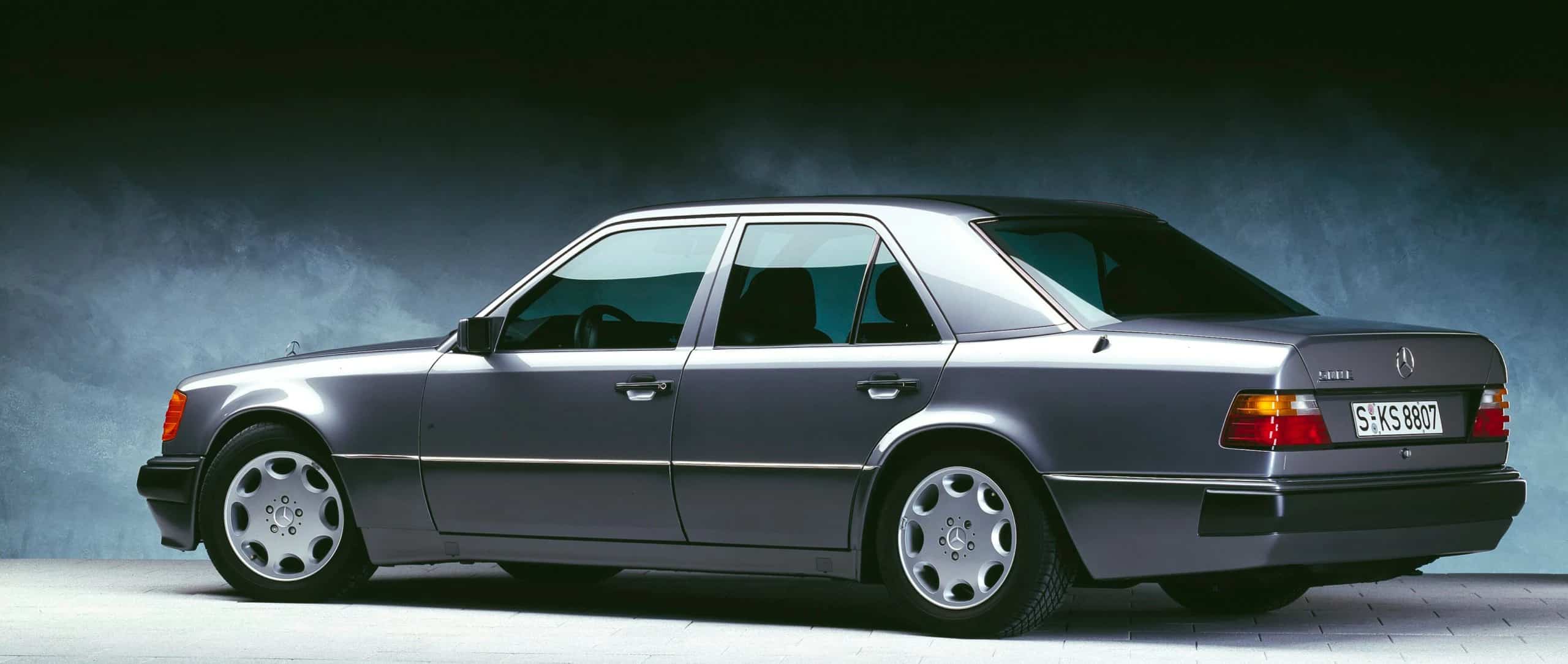
The Mercedes 500E/E500: A Hand-Built Super Sedan
The W124-based 500E/E500 was born from a far different set of circumstances than the 190E 2.3-16. BMW’s mid-sized M5 performance sedan arrived in America in 1988. The first M5 was based on the aging E28 platform, but BMW quickly followed up with a second-generation M5 based on the more modern E34 chassis. The M5 had the first-mover advantage and set the standard for the mid-sized super sedan category. Mercedes needed to have a car to stake its claim and compete within the high-profile super sedan category. As late as 1990, the largest displacement mid-size sedan in the Mercedes lineup was the 178 horsepower, six-cylinder 300E.
In the late 1980s, development began to turn the W124 sedan into an M5 killer. At the time, manufacturing the 500E at the Mercedes factory at Singelfelden posed several logistical challenges. Mercedes ultimately turned to Porsche, which had excess manufacturing capacity and was located just across town in Zuffenhausen. In the late 1980s, Porsche was still feeling the pain of a strong Deutsche Mark and a worsening global slowdown. As a result, the Porsche factory at Zuffenhausen had spare production capacity, and management was eager to fill it. A historic deal between Mercedes and Porsche emerged.
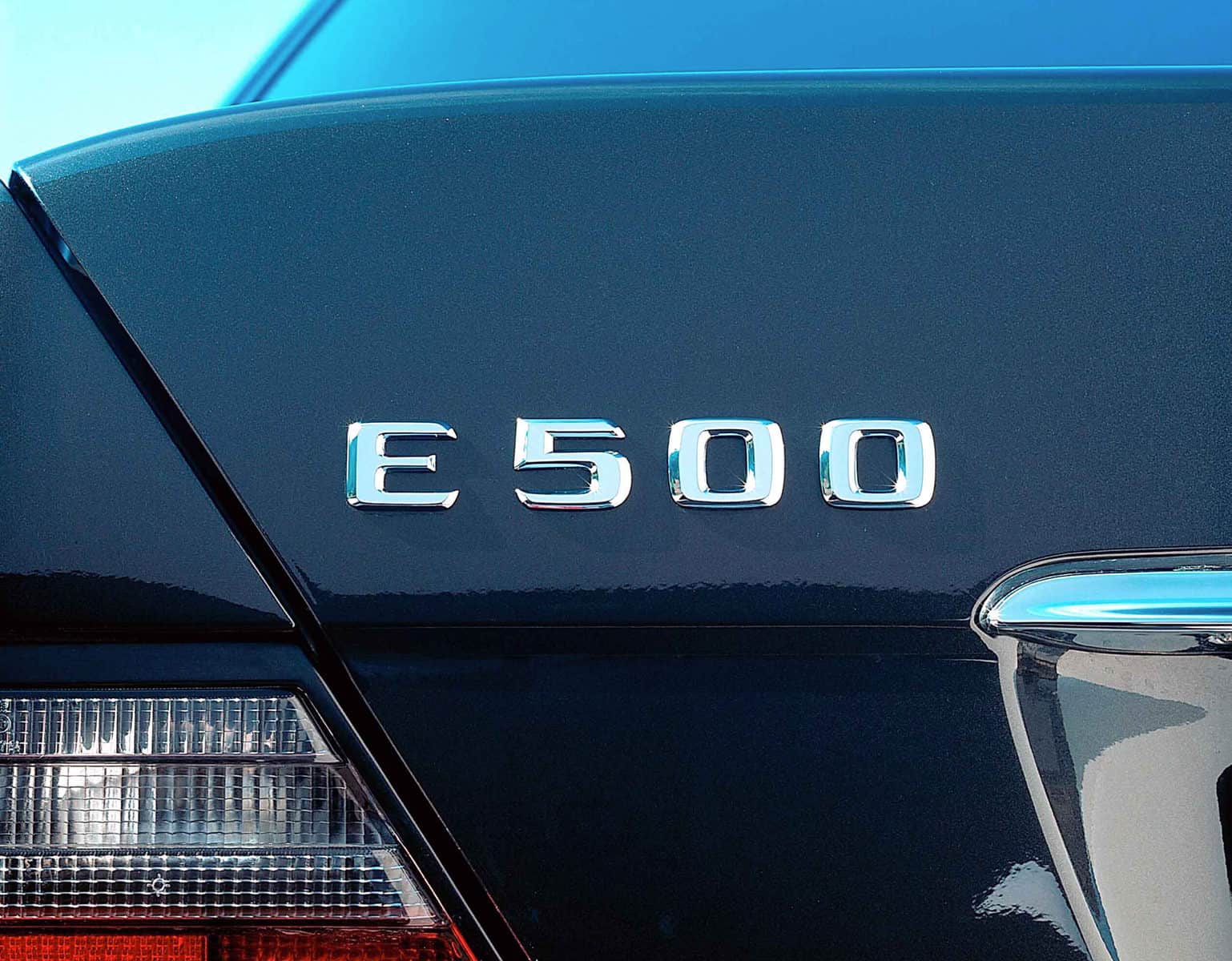

At the time of the 500E/E500’s development, the Mercedes aftermarket sport tuner Aufrecht, Melcher, and Grossaspach (better known today as AMG) was still an independent company. In 1986, AMG developed their own version of a super sedan, known as the Hammer. Built on the W124 chassis, the Hammer remains one of the most significant AMG cars of all time. It is important to note that it was not until almost a decade after the launch of the 500E/E500 that Mercedes-Benz officially acquired AMG.
For a modern, mass-produced car, the 500E/E500 was relatively low-production, had a bespoke feel, and involved all kinds of unusual extra work for both manufacturers. Of the total 10,479 cars produced between 1991 and 1994, only 1,505 were officially imported into the United States. Even during the zenith of the 500E/E500 production years, it was rare to see one rolling down an American road. The subtle design cues of the 500E/E500 made it hard to differentiate the “wolf in sheep’s clothing” from a mainstream E class. The 500E/E500 was an instant classic, and today the market is recognizing it as a significant and collectible Mercedes. The 500E/E500 should become more desirable in the future given both its unique history and the memorable experience it bestows upon on drivers.
The 500E/E500 enjoyed a distinct manufacturing process from most automobiles produced in the modern era—today, this vehicle is emerging as the high-water mark of post-war Mercedes performance and quality. Conversion of the existing W124 chassis into the 500E/E500 was done the old-fashioned way—by hand. During assembly, each 500E/E500 was manually pushed around the Porsche factory floor on rolling dollies. Each car took over eighteen days to complete. At various production stages, the cars were physically transported several times back and forth across Stuttgart between the Mercedes and Porsche factories. The front and rear fenders were widened substantially to accept the bigger tires and larger track of the 500E/E500. The fender modifications were the only true visible aesthetic changes that distinguished the 500E/E500 from its comparatively anemic 300E sibling. The subtly flared fenders combined with its lower stance give the car a more substantial, almost sinister shark-like appearance.

The 500E/E500 shared brakes, suspension, and other components with the groundbreaking all-new 1990 R129 Mercedes 500SL. Porsche and Mercedes shared vital aspects of the design, development, modification, and production of the 500E/E500, which was not the most efficient or cost-effective approach. Porsche strengthened the W124 chassis and widened the standard transmission tunnel to fit the larger and heavier Mercedes-Benz aluminum block 32-valve V-8. Stampings from Mercedes-Benz and other suppliers were sent directly to Porsche to be hand welded onto the W124 chassis. Rustproofing, painting, and final trim installation occurred at the Mercedes factory. Again, the cars came back to Porsche to have the engines installed. After all the back and forth, Porsche completed the final assembly. Before delivery, the vehicles were shipped back across town and underwent final testing and delivery preparations by Mercedes-Benz.
The automotive press has always been supportive of the 500E/E500. In 2004, Automobile magazine proclaimed, “If the old E-Class was a chunk of granite, the 500E was a chunk of granite launched from a trebuchet. Porsche lent assembly help. Buyers had to agree not to use it to invade Poland.” More recently, an online commentary from Jalopnik has stated, “I think the 500E is a shockingly underrated automotive great. There is absolutely nothing flamboyant about this car, and it really does look like any other W124, which is something you can’t say about an M5 or any other hot Merc since. The fenders are subtly bulged, the rear bench seat replaced by buckets with a center console, but it takes a keen car enthusiast to see this isn’t just any sedan. This is really how to do a Q-car.”
The 500E/E500 was not for everyone. Upon its U.S. initial launch in 1992, the 500E had a list price of $80,000 (in comparison, a plebeian 300E in 1992 dollars cost $49,500). Adjusted for inflation, the 500E/E500 was about $150,000 in today’s dollars. Add a United States gas-guzzler tax of $2,600, and the total price pushed the four-door super sedan into exclusive territory. Heavily laden with luxury features, the 500E/E500 came standard with heated Recaro sport seats, Becker radio/cassette/CD, driver and passenger airbags, traction control, ABS, an automatic rear sunshade, and a 155 MPH speed limiter. There were no options on the car other than a CD changer and a phone. Mercedes-Benz lost money on every 500E/E500 it sold. Given the eighteen-day production cycle, the back and forth between factories, and all the hand craftsmanship, it’s easy to see why the car was a not-for-profit project. For Mercedes-Benz, this car was less about profit and more about making a statement to the rest of the automotive world.
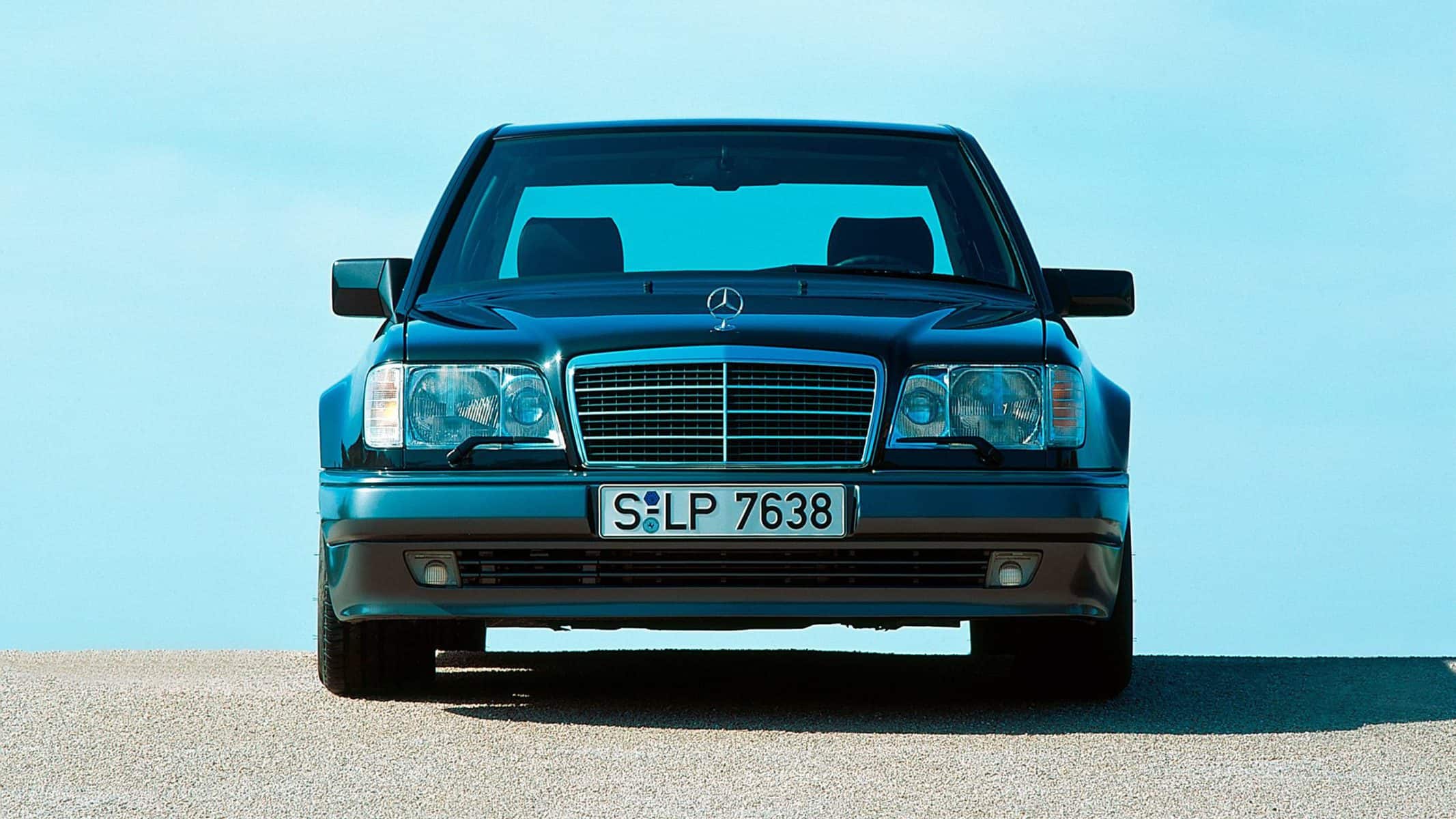
In many ways, the 500E/E500 was the spiritual successor to the high-performance 1968 Mercedes 300 SEL 6.3 and the infamous high-performance 1975 Mercedes 6.9. In other ways, the 500E/E500 is unlike anything that came before or since—from Mercedes or any other manufacturer. The car has a rare subtleness to it. It has a phenomenal bank vault build quality. With every mile it devours, the car reminds you that it is no ordinary vehicle. Even by today’s ludicrously high horsepower and performance standards, the 500E/E500 is still an impressive performer. It’s potent, well-balanced, easy to drive, and has a substantial feel on the road. It’s a heavy yet nimble sedan, and it’s not an overly large car. The 500E/E500 is very confident on the road and is very much at home lumbering along at 120 miles per hour.
In its final year of production, Mercedes models changed their naming convention to alphanumeric—for its last year, the 500E became the E500. The 1994 model is the rarest and most refined and desirable of the series. Only 374 E500s came to America in 1994. The 1994 model enjoys a smoother and more modern front and rear end, giving the car an integrated, cleaner, and more modern look. Technical upgrades in late 1993 and 1994 included much larger 12.6-inch brakes from the SL 600. In late 1994 and briefly into 1995, Mercedes offered the E500 Limited. These cars added code “958” which included distinct interior leather with patterned seat inserts, special maple trim, a leather-bound owners manual, and seventeen-inch EVO II alloy wheels. The ride was also lowered to give the car a lower stance. Rarer still was the E60 option code “957” which included a 6-liter V8. With the E60, horsepower climbed to 381 and propelled the car to sixty mph in under 5.5 seconds.
The 190E 2.3-16 and the 500E/E500 represent a rare departure from the norm at Mercedes-Benz. The future will be kind to these two iconic modern classic performance sedans. Together, this pair checks a lot of boxes given their rarity, backstory, build quality, and, perhaps most importantly, driving appeal. The 190E 16 valve and the 500E/E500 are both in a league of their own. Today, Mercedes-Benz and AMG’s modern vehicles have infinitely more power, sophistication, and technology than our dated subject cars. However, no current Mercedes-Benz has replicated the balance, feel, and sensibility of the 190E 16 valve and the 500E/E500. These two distinct cars have only begun to catch Mercedes-Benz drivers, enthusiasts, and collectors’ imagination and interest. Time will tell, but the future looks bright for the 190E 16 valve and the 500E/ E500.




